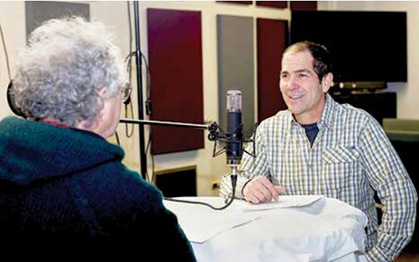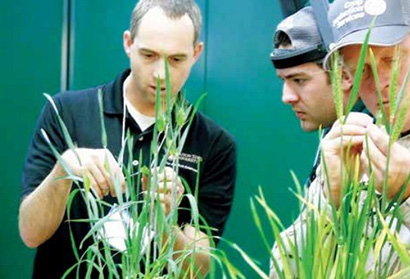The WSU Extension Dryland Cropping Systems tean is making a difference
This is the last Wheat Life article I will write. After 13 years as the Endowed Chair in Small Grains Extension and Research, Weed Science at Washington State University (WSU), I will retire by year’s end. I thoroughly enjoyed my time at WSU. It has been my privilege to work and learn from many exceptional wheat and barley growers, industry representatives, and WSU colleagues. I have been particularly lucky to be a member of the WSU Extension Dryland Cropping Systems team. I hope I have been able to make a positive difference for at least a few of you.
I arrived at WSU in the fall of 2012 after serving 22 years as the Extension dryland cropping systems specialist at the University of Nebraska-Lincoln Panhandle Research and Extension Center in Scottsbluff. The endowment of my position at WSU by the Washington Grain Commission (WGC) incentivized and inspired me to come to the Palouse. When I arrived, Dr. Rich Koenig had just become associate dean of Extension in the College of Agricultural, Human, and Natural Resource Sciences. WSU Extension had been substantially impacted by the budget cuts following the Great Recession of 2007 and 2008. With fewer people in Extension, Rich suggested that I consider forming a team of specialists and county educators to develop and coordinate educational programming focused on dryland wheat and barley production.
With funding support from the WGC, both from my endowment and annual funding requests, the WSU Extension Dryland Cropping Systems team was born in 2013. One of our first goals was to build a website to serve as a central resource for all the information WSU has related to wheat and barley production.

The WSU Wheat and Small Grains website (smallgrains.wsu.edu) was launched in 2014. It is a continuous work in progress, constantly providing new and timely information and resources. The number of unique users and sessions continues to grow each year. If you have not visited the website lately, I encourage you to take a few minutes to see all that it offers. 
In 2017, I became a podcaster. My proximity to many WSU and U.S. Department of Agriculture-Agricultural Research Service scientists gave me a unique opportunity to speak with them about their research and its relevance for Washington wheat and barley growers. I hit play on the WSU Wheat Beat Podcast (smallgrains.wsu.edu/category/podcast/) with the first podcast episode, “Wireworms with Aaron Esser and David Crowder,” which aired on Oct. 24, 2017. The last episode, number 214, will be published on Aug. 4, 2025. I enjoyed hosting the podcast, and I learned a great deal from my guests. With the convenience of listening wherever you are, podcasts are a great way to learn. If you have not listened to the WSU Wheat Beat Podcast, I encourage you to check it out before it is archived in October 2026.
In 2021, I managed to convince several of my weed science colleagues in the Pacific Northwest to join me in contributing to a weed science blog. The first Weeders of the West blog (smallgrains.wsu.edu/ weeders-of-the west) post was “Herbicide Resistance: Can We Blame Glyphosate?” There have been 102 posts since then. Some articles discuss current research; other articles are musings on current issues in weed science. +

One goal of the blog was to stimulate grower comments so that we could continue dialogue on the topics and learn from one another. Unfortunately, that goal has not had much success. Even when I intentionally wrote a provocative article entitled, “Is No-Till Sustainable?” to try and stimulate conversation, only Tracy Eriksen, an innovative no-till grower near St. John, engaged in the conversation. Thank you, Tracy! I believe the best learning occurs when growers and scientists engage in conversation around issues of interest. If you have never read a Weeders of the West blog post, please check it out and consider providing a comment that will enhance the conversation.
In addition to the WSU Wheat and Small Grains website, the WSU Extension Dryland Cropping Systems team also plans and hosts the WSU Wheat Academy. The WSU Wheat Academy, which began in 2015, is a highly rated, two-day educational event held in Pullman in December. Growers and crop consultants take a deep dive into the science behind the recommendations that WSU provides. Attendance is limited to 75 people to keep class sizes small and allow for hands-on learning opportunities and good dialogue between attendees and presenters.
Agricultural Extension faces several challenges going forward. These include reduced state and federal funding that will likely result in a continued decline in personnel and greater limitations on operating budgets for those that remain. I think that agricultural Extension in the future will rely heavily on the co-production of knowledge and collaborative on-farm research. As farm machinery gets larger and technology more advanced and expensive, these collaborations with growers will be critical for a university Extension system increasingly constrained by a lack of resources.
Another challenge I see coming is artificial intelligence (AI). My teaching colleagues are already wrestling with the risks and benefits of AI in the classroom. Similar challenges face Extension. There are already several chatbots that use AI to scour the internet and summarize the vast amount of information found there. While this can be very useful, it can also result in misinformation. Generative AI is known to create fictional answers, and the more powerful it gets, the more outlandish some of its creations become. I think Extension will continue to have a role to play in verifying and contextualizing AI-generated information for agriculture as it has for more traditionally
developed information.
Much of the information WSU Extension has available online does not meet new federal and state web accessibility standards that require all content be usable by everyone, including those with sight and hearing impairments. Some nonaccessible content is already being removed from WSU websites, including the WSU Wheat and Small Grains website. While it is possible to make many of these resources compliant with the standards, it will take time, effort, and money to do so. I think some valuable resources will disappear from the WSU Wheat and Small Grains website and many other useful websites and may never return. I ask for your patience and understanding as we work to accomplish these improvements in support of our mission of disseminating useful information and tools for your use.
I have seen a lot of changes in agriculture in my 40-plus years working in Extension. Extension has adapted to meet these new changes and challenges, and I’m confident it will continue to do so well into the future. I have enjoyed working at the nexus of science and farming and being a member of the WSU Extension Dryland Cropping Systems team, and I know the wheat and barley growers of Eastern Washington will continue to be well served by this team for many years to come.
The article originally appeared in the August/September issue of Wheat Life Magazine.

Drew Lyon
Professor, Endowed Chair Small Grains and Research, Weed Science, Washington State University,
